Among the wide range of resistors values available, the 1 ohm resistor stands out for its precise in current control, power management, and signal regulation. Resistors may appear simple, but they are among the most use components in electronic circuits. In this comprehensive guide, we'll explore every facet of the 1 Ohm resistor — from its fundamental characteristics and colour code to its types, typical use cases, and how to select the right one for your project. Here is the catalog:
1. What is a 1 Ohm Resistor and Its Function?
3. Types of 1 Ohm Resistors and Their Characteristics
4. Applications of a Resistor 1 Ohm in Electronics
5. 1 Ohm Resistors in Audio Equipment
6. 1 Ohm Resistor vs. Other Resistance Values: When to Use a 1 Ohm Resistor?
7. Selecting the Right 1 Ohm Resistor: Power Rating and Tolerance
8. Frequently Asked Questions About 1 Ohm Resistors
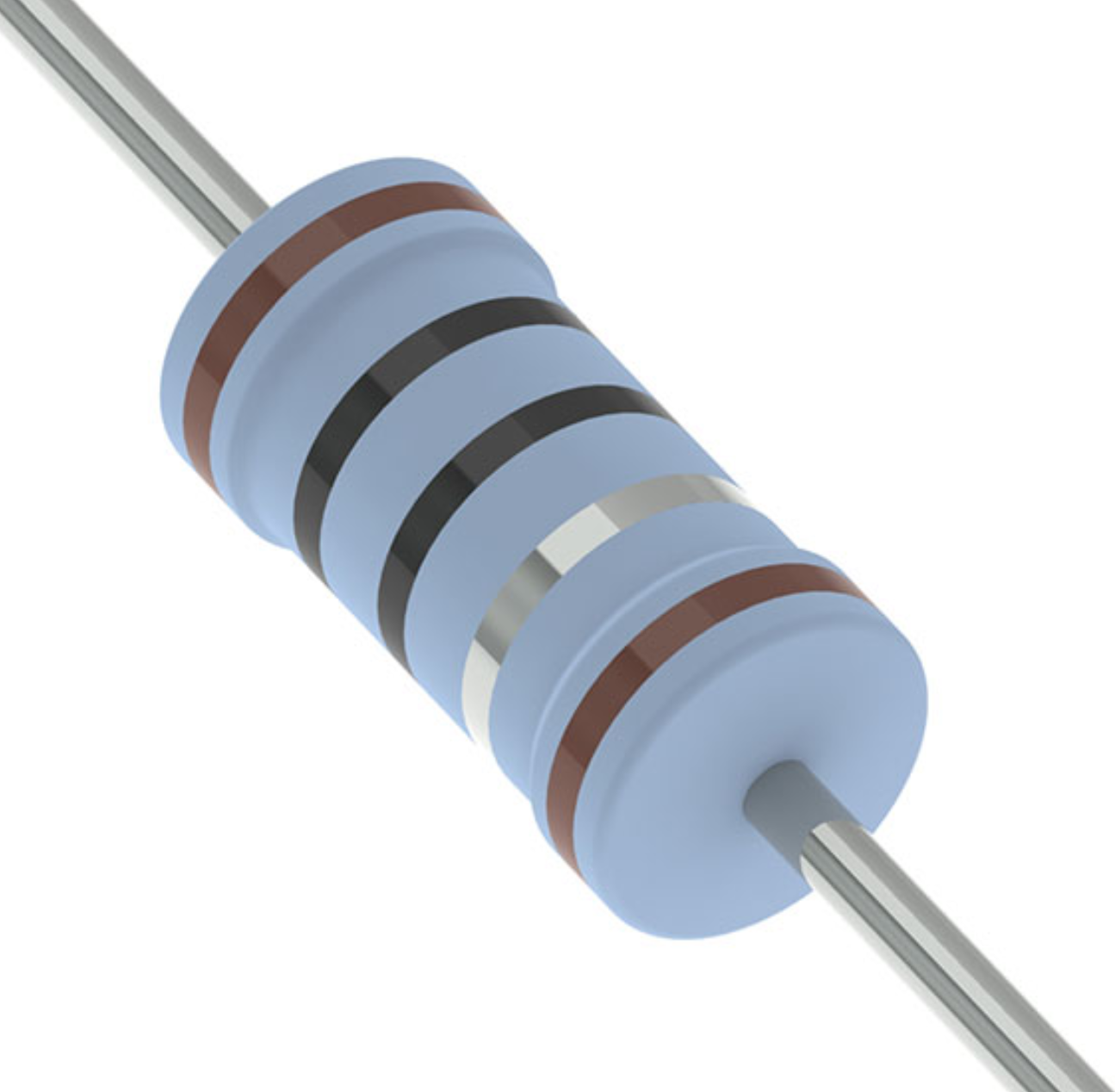
1. What is a 1 Ohm Resistor and Its Function?
A 1-ohm provides 1Ω of electrical resistance, a value that allows a moderate amount of current to pass through it. According to Ohm's Law (V = I × R), a 1Ω allows 1 ampere of current to flow for every 1-volt applied across its terminals.
While it may seem like a low resistance value, its applications are highly specific and extremely useful. In circuits where require minimal voltage drop and limited current control, the 1R-resistor provides just enough restriction to serve its purpose without interfering with signal quality.
Main Functions of a 1 Ω-Resistors:
1. Current Limiting:
One of the most common applications of resistors is to limit or control the current in a circuit. Use in low-current circuits or applications where only need a small resistance to prevent excessive current flow. Prevents excessive current from damaging components.
2. Current Sensing:
In some circuits, particularly those involving high-current systems, a 1-Ohm-resistor can use as a shunt resistor. This is a method of measuring current flow by monitoring the voltage drop across the resistor.
By using Ohm’s Law, you can determine the current flowing through the circuit. Since the resistance is so low (1 ohm), it causes a small voltage drop that can measure without significantly affecting the overall circuit performance.
3. Power Dissipation:
Even though the resistance is low, when current flows through a resistor, it still dissipates power in the form of heat. In the case of a 1Ω, this may not be a large amount of heat, but it's important to consider the power rating of the resistor to ensure it can handle the current without overheating.
4. Noise Reduction:
In some applications, can use to filter out electrical noise, especially in sensitive circuits like audio systems or precision measurement instruments. It helps to stabilize the flow of current and smooth out any electrical fluctuations or disturbances.
5. Stabilizing Current in Circuits:
In circuits where require voltage regulation, a 1-Ohm circuit can help maintain a steady and predictable current flow. This is useful in devices like power supplies, amplifiers, or certain microelectronic systems.
6. Voltage Dropping: Creates a controlled voltage drop in power supply lines
7. Signal Conditioning: Assists in noise reduction and impedance control.
2. Resistor Color Code 1 Ohm
Identifying a 1-Ohm visually is easy once you're familiar with resistor colour coding. Here are the two banding codes types.
1 Ohm Resistor Color Code 4 Band
Band | 1st-Band | 2nd-Band | 3rd-Band | 4th-Band |
Color | Brown | Black | Gold | Gold |
Meaning | First digit | Second digit | Multiplier | Tolerance |
Value | 1 | 0 | ×0.1 | ±5% |
Color Bands: Brown - Black - Gold - Gold (or Silver)
1. First Band: Brown (Digit = 1)
The first significant digit of the resistor value.
Explanation: The first band is Brown, which corresponds to 1 in the color code chart.
2. Second Band: Black (Digit = 0)
The second significant digit of the resistor value.
Explanation: The second band is Black, which corresponds to 0.
3. Third Band: Gold (Multiplier = ×0.1)
The multiplier that scales the two significant digits (from the first and second bands).
Explanation: The third band is Gold, which corresponds to a multiplier of 0.1. This means that the value we calculated from the first two digits will be multiplied by 0.1.
4. Fourth Band: Gold (Tolerance = ±5%)
The fourth band represents the tolerance, which tells you the possible deviation from the stated value.
Explanation: The fourth band is Gold, which means the tolerance is ±5%. This means the actual resistance can vary by 5% above or below the stated value.
How to Calculate the Value:
Now, let’s combine all the information:
First two digits: The first band is 1, and the second band is 0, so the first two digits are 10.
Multiplier: The third band is Gold, which has a multiplier of 0.1.
Calculation: 10×0.1=1 Ohm Tolerance:±5%
This means that the actual resistance can be 1-Ohm ± 5%. Therefore, the resistance could be anywhere between:
1 Ohm−5%=0.95 Ohms and 1 Ohm+5%=1.05 Ohms
So, the resistance of the resistor could range from 0.95 Ohms to 1.05 Ohms.

How to Read a 4-Band Resistor:
1. First and Second Bands: The first two colors represent the first two digits of the resistance value.
2. Third Band: The third band is the multiplier, which scales the two-digit number.
3. Fourth Band: The last band tells you the tolerance (how much the actual resistance can vary from the marked value).
By following this method, you can easily interpret the value and tolerance of any 4-band resistors.
1 Ohm Resistor Color Code 5 Band
Band | Colour | Meaning |
1st | Brown | 1 (first-digit) |
2nd | Black | 0 (second-digit) |
3rd | Black | 0 (third-digit) |
4th | Silver | Multiplier × 0.01 |
5th | Brown | Tolerance ±1% |
Brown – Black – Black – Silver – Brown
Let’s break it down:
Calculate the value: Significant figures: 100, Multiplier: × 0.01, Result: 100×0.01=1 Ω
Summary of How to Read a 5-Band-Resistor:
Reading a 5-band coding is similar to a 4-band , but with an extra significant digit for greater precision. Here's a detailed explanation of how to read a 5-band colour code.
1. First three bands represent the significant digits of the resistor value.
2. Fourth band is the multiplier (scales the value, which you multiply the significant digits).
3. Fifth band represents the tolerance (how much the value can vary from the stated value, the acceptable deviation from the stated resistance value).
4. Multiply the first three digits by the multiplier to get the final resistance value.
By following these steps, you can easily read 5-band resistors.
4-Band Compare 5-Band Color Coding
Band | 4-Band Colour Code | 5-Band Colour Code |
1st-Band | Brown(1) | Brown(1) |
1st-Digit | 1st-Digit | |
2nd-Band | Black(0) | Black(0) |
2nd-Digit | 2nd-Digit | |
3rd-Band | Gold x0.1 | Black(0) |
Multiplier | 3rd-Digit | |
4th-Band | Gold±5% | Silver x0.01 |
Tolerance | Multiplier | |
5th-Band | - | Brown |
Tolerance: ±1% |
3. Types of 1 Ohm Resistors and Their Characteristics
Come in various materials and designs, each affecting their performance characteristics such as stability, power handling, and temperature behavior.
1. Carbon Film Resistor
Material: Made of a thin layer of carbon film deposited onto a ceramic substrate.
Construction: A carbon film is coated on the ceramic, and the resistance control by adjusting the thickness of the carbon layer.
Advantages:
Cost-effective: Relatively inexpensive.
Good stability: Provides stable resistance over time.
Disadvantages:
Higher tolerance: Typically, they have higher tolerance (±5% to ±10%).
Higher noise: Carbon film resistors tend to generate more electrical noise compared to other types.
Applications: General-purpose applications, low-power devices, and consumer electronics.
2. Ceramic Resistor
Material: Ceramic body with a resistive element made of metal oxide or carbon.
Construction: The resistor encase in ceramic, which provides high durability and heat resistance.
Advantages: Heat Resistance: Good for high-temperature applications. Durability: High resistance to physical damage.
Disadvantages:
Bulkier: Compared to metal film or other thin-film types, ceramic resistors can be bulkier.
Higher noise: Like carbon film, ceramic resistors are prone to producing electrical noise.
Applications: Power electronics, high-power resistors, and in applications requiring heat resistance.
3. Metal Film Resistor
Material: A thin metal film (such as nickel-chromium) deposit on a ceramic core.
Construction: The resistance control by the width and length of the metal film.
Advantages: High precision: Offers low tolerance (±1% to ±2%) and high accuracy. Low noise: Metal film generate less electrical noise compared to carbon film. Stable performance: Stable over time and temperature variations.
Disadvantages:
More expensive: Higher cost compared to carbon film resistors.
Applications: High-precision circuits, audio equipment, scientific equipment, and other sensitive applications where require accuracy.
4. Metal Oxide Film Resistor
Material: Made from a metal oxide (such as tin oxide) that deposit onto a ceramic core.
Construction: The metal oxide film deposit on a ceramic substrate, and the resistor value determine by the film's thickness.
Advantages: High temperature tolerance: Metal oxide film can handle higher temperatures compared to other types. Good stability: Offers a stable resistance over a broad range of environmental conditions. Low noise: Provides less electrical noise than carbon-based resistors.
Disadvantages: Higher cost: Slightly more expensive than carbon and metal film types.
Applications: Use in power electronics, automotive applications, and high-temperature environments.
5. Metal Foil Resistor
Material: Made by etching a thin metal foil to create a precise resistance value.
Construction: The resistor consists of a metal foil attached to a ceramic or fiberglass substrate.
Advantages:
Extreme precision: Metal foil resistors have low tolerances (±0.01% to ±0.1%).
Excellent stability: Offers superb performance even under varying temperatures and conditions.
Disadvantages:
Expensive: Typically use in high-end, precision applications.
Applications: Precision instrumentation, test equipment, medical devices, and high-accuracy applications.
6. Thick Film Resistor
Material: Made by applying a thick film of resistive material (typically metal oxide) onto a ceramic substrate.
Construction: The resistive material screen-print or apply as a thick layer onto a ceramic surface.
Advantages:
Cost-effective: Cheaper to manufacture compared to thin-film resistors. Durable: Suitable for high-power applications.
Disadvantages:
Lower precision: Generally have higher tolerance values (±5% to ±10%).
Higher noise: Generate more noise.
Applications: Power supplies, industrial equipment, and consumer electronics.
7. Wirewound Resistor
Material: Made by winding a metal wire (usually a resistive alloy like nichrome) around a ceramic or fiberglass core.
Construction: The resistance determine by the length and material of the wire.
Advantages: High precision: Have excellent tolerance (typically ±1% to ±2%). High power rating: Can dissipate a significant amount of heat without failure.
Disadvantages: Bulkier: Tend to be larger in size compared to other types. Can introduce inductance, which be undesirable in high-frequency applications.
Applications: Power supplies, high-power circuits, and situations requiring precise and stable resistance.
8. 1 Ohm Resistor SMD
Material: Typically made from metal film or ceramic and design for surface-mount technology.
Construction: SMD resistors are flat, compact, and design to solder directly onto the surface of a PCB (Printed Circuit Board).
Advantages: Space-saving: Ideal for compact or dense circuits where limit space. High precision: Available in metal film or other high-precision types.
Automated production: Design for automatic assembly lines, making them cost-effective for mass production.
Disadvantages: Requires special soldering: Reflow soldering or wave soldering, making them difficult to handle manually.
Smaller tolerance: While high-precision versions exist, standard SMD types often have higher tolerances compared to traditional through-hole resistors.
Applications: Modern electronics, portable devices, smartphones, laptops, and other compact devices.
Summary Types:
Type | Key Characteristics | Applications |
Carbon Film | Cost-effective, high noise, moderate tolerance | General-purpose, low-power devices |
Ceramic | High heat resistance, durable, bulkier | Power electronics, high-power resistors |
Metal Film | High precision, low noise, stable performance | Precision circuits, audio, scientific equipment |
Metal Oxide Film | High temperature tolerance, good stability, low noise | Automotive, power electronics |
Metal Foil | Extreme precision, excellent stability, low tolerance | High-precision applications |
Thick Film | Cost-effective, durable, low precision, high power rating | Power supplies, industrial equipment |
Wirewound | High precision, high power rating, bulky, inductive | High-power circuits, precision applications |
SMD | Compact, space-saving, suitable for automated production | Modern electronics, compact devices |
Each type of 1-Ohm-resistor has specific applications and advantages based on its design, tolerance, and performance characteristics. Choosing the right type of resistors depends on the requirements of your circuit, including precision, heat tolerance, and size.
Common Package Types
The package types are all commonly use for different applications. Here's a overview of each:
1. Axial resistors : The traditional type, with leads extending from both ends of the resistor. These leads can be bent or soldered into a circuit.
Common in through-hole mounting for general electronic applications. Usually small to medium, depending on the power rating.
2. Radial resistors : The leads come out from the same side of the component, usually at opposite ends. This makes them compact and easy to install on a PCB.
Ideal for automation and mass production, especially in through-hole technology. Size typically medium to large, with the leads being more spaced out.
3. TO-220 Resistor: A larger package use for resistors or other components (like transistors or voltage regulators) that require heat dissipation. It has a metal tab that can connect to a heat sink. High-power-resistors, typically use in power electronics or in circuits that generate a lot of heat. Size Larger compared to axial or radial, suited for high-power applications.
4. 4-SIP (Single In-line Package) Has 4 leads arranged in a single row. It is similar to a standard DIP (Dual In-line Package), but with only one row of pins. Often used in specific applications where space-saving and require ease of PCB mounting. Size: Typically small to medium.
5. Radial-4 Leads A variation of the radial package where the resistor has four leads, typically two on each side of the resistor body. Use in more complex circuits or where need additional connection points.
4. Applications of a Resistor 1 Ohm in Electronics
A 1-Ohm resistor's specific value lends itself to specialized position in electrical and electronic designs.
Use in various electronic applications where require managing or controlling current flow, measuring current, or protecting circuits. Though its resistance value is low, it can ensure the stability, efficiency, and protection of electronic systems.
1. Current Sensing (Shunt Resistor)
Use in circuits to measure the current flowing through the system by detecting the voltage drop across it. Since Ohm’s law tells us that the voltage drop is proportional to the current, the 1-Ohm makes it possible to measure large currents accurately without significantly affecting the circuit.
When current flows through a 1 Ohm resistor, a small voltage develops across it. By measuring this voltage, the current flowing in the circuit can determine. The low resistance ensures that it has minimal impact on the circuit's operation, making it ideal for high-current measurement.
Applications:
Battery Management Systems (BMS): Use for monitoring the charging and discharging currents in battery-powered devices.
Power Supply Circuits: Helps monitor current for efficiency and stability.
Motor Control Circuits: Measures current to ensure motors run within safe limits.
2. Power Supply Regulation
In power supply circuits, use a 1 Ohm resistor to limit or regulate the current. It helps maintain stable operation by preventing overcurrent situations that could damage components, such as capacitors, transistors, or ICs (integrated circuits).
By inserting the 1 Ohm resistor in series with the load, limit the current to a safe level. The low resistance means that while it restricts the current, it doesn’t waste much energy, making it efficient for low-power applications.
Applications:
DC-DC Converters: Use in switching power supplies to regulate the flow of current and ensure smooth voltage conversion.
Voltage Regulators: Helps in current regulation to maintain the output voltage within required tolerances.
Battery Charging Circuits: Regulates the current to prevent overcharging, ensuring battery longevity.
3. LED Current Limiting
LEDs (Light Emitting Diodes) require precise current control to ensure they perform optimally and do not burn out. Use in LED circuits to limit the current flowing through the LED.
The resistor acts as a current limiter, dropping a small portion of the voltage across itself, ensuring that the current flowing through the LED stays within the safe operating range. This prevents the LED from drawing too much current, which will cause it to fail prematurely.
Applications:
LED Indicator Lights: Ensures that the current flowing through control small indicator LEDs.
LED Displays: Use in digital displays, including seven-segment displays or LCD backlighting to control current.
Automotive Lighting: In vehicle circuits for controlling LED headlights, interior lighting, etc.
4. Amplifier Circuits
In audio amplifiers or signal amplifiers, use to stabilize and regulate the current flowing through key components like transistors or operational amplifiers. They help prevent overcurrent conditions that could damage the components.
These resistors use in the feedback loop of amplifiers, helping to set the gain and ensure the circuit operates within its limits. By ensuring that the current remains stable, the amplifier provides consistent performance without distortion or damage.
Applications:
Audio Amplifiers: In home audio systems, headphone amplifiers, and car audio amplifiers.
Power Amplifiers: Helps regulate power output in high-power audio systems or other types of signal amplification circuits.
Operational Amplifiers (Op-Amps): Use in precision circuits to stabilize current flow for accurate output.
5. Protection in Low-Voltage Circuits
Serves as a protective measure in circuits with low-voltage or sensitive components that easily damage by excess current. It helps prevent overcurrent conditions, thereby extending the lifespan of these components.
The 1ohm circuit effectively limits the maximum current that can flow through the circuit. This is especially useful in microcontroller circuits or sensor-based systems, which damage by spikes in current.
Applications:
Microcontroller Circuits: Prevents excess current from reaching the microcontroller or its peripherals.
Low-Power Circuits: Use in battery-powered devices to prevent current surges that could drain the battery prematurely.
Signal Processing Systems: Ensures the safety of sensitive components by limiting the current.
6. Noise Filtering (In Audio and RF Circuits)
Can help filter out electrical noise in circuits, particularly in audio systems or radio-frequency (RF) circuits. By smoothing current flow, they reduce high-frequency noise that could interfere with the signal integrity.
The resistor can dampen high-frequency noise or spikes, preventing them from distorting the signal or causing unwanted interference.
Applications:
Audio Systems: In preamplifiers or audio processors to filter out hum or noise.
RF Circuits: In circuits like radio transmitters or receivers, where noise can disrupt signal clarity.
Signal Processing: Use in filters or equalizers to remove unwanted noise.
7. Power Dissipation and Heat Regulation
When current flows through the resistor, it converts some of the electrical energy into heat. This can help in maintaining the temperature of the circuit or can use as a method of heat regulation.
Applications:
Power Amplifiers: Controls the power flow and dissipation in high-power audio circuits.
Motor Drivers: In motor control circuits, the resistor helps manage energy conversion and heat generation.
Thermal Management: Use in high-power systems to ensure components do not overheat.
8. Motor Control and Power Electronics
In motor control circuits, use to measure and control the current flowing through motors, ensuring they operate within safe limits.
The resistor is part of a feedback loop that monitors the current to adjust the motor's speed, torque, and power. This ensures optimal motor performance and prevents overloading.
Applications:
DC Motors: Use in systems where speed regulation and current monitoring are necessary.
Brushless Motors (BLDC): Helps manage current in brushless DC motor systems.
Servo Systems: Controls the performance of servo motors in robotics, automation, and manufacturing equipment.
9. Surge Protection and Inrush Current Limiting
Use in circuits to limit the inrush current when a device is turned on. This is especially important when powering up components with large capacitors, as they often draw a high initial current.
The resistor limits the current surge by providing a small resistance, preventing the circuit from being damaged by large current spikes.
Applications:
Inrush Current Limiting: Use in AC power supplies, ensuring the current doesn't exceed safe limits when the circuit is first energized.
Surge Protection Circuits: Protects against electrical surges from external sources like lightning or power grid fluctuations.
5. 1 Ohm Resistors in Audio Equipment
The 1-Ohm often in audio design, particularly in signal integrity and impedance control because its ability to limit current, control power, and filter noise.
Audio-Specific Uses:
Speaker Systems: For impedance correction and protection. Use in speaker protection circuits to ensure that the impedance matching between the amplifier and the speaker is correct. This helps avoid power mismatch issues that could lead to overload or distortion.
Amplifiers: Controls transistor biasing, feedback damping. In audio amplifiers, a 1-Ohm often use to limit the current that flows through various components, particularly transistors, operational amplifiers (Op-Amps), or output stages.
Signal Integrity: Reduces oscillations and impedance mismatch.
Impedance Matching: Ensures power is efficiently transferred to speakers.
High-end audio systems often rely on low-ohm resistors to fine-tune tonal balance, enhance fidelity, and prevent distortion.
Noise Reduction and Filtering: Can help in filtering electrical noise. This noise can come from external sources or from within the audio system itself, potentially causing hum, buzz, or distortion in the audio output.
6. 1 Ohm Resistor vs. Other Resistance Values: When to Use a 1 Ohm Resistor?
Choosing between 1 Ohm and other standard values depends on desired current flow, voltage drop, and power handling.
Understanding when to use a 1 Ohm resistor compared to other common resistor values (2 Ohm, 5 Ohm, 10 Ohm) is necessary for designing circuits. Let's explore this comparison based on typical applications, current limiting effects, signal attenuation, and power dissipation.
Comparison Summary Table
Resistor Value | Typical Applications | Current Limiting Effect | Signal Attenuation | Power Dissipation |
1 Ohm | Current sensing, LED drivers, low-power circuits | Minimal current limitation | Minimal attenuation | Low power dissipation, but increases with high current |
2 Ohm | Audio, current sensing | Moderate current limitation | Low to moderate attenuation | Slightly higher power dissipation than 1 Ohm |
5 Ohm | Power supply regulation, pulse circuits | Moderate current limitation | Moderate attenuation | Higher dissipation, especially at higher currents |
10 Ohm | Voltage dividers, pull-up resistors, high-power circuits | Significant current limitation | Significant attenuation | Higher dissipation, useful for thermal management |
When to Use Each Resistor Value?
· Use 1-Ohm for low-current applications where minimal voltage drop and power dissipation are necessary, such as in current sensing and LED drivers.
· Use 2-Ohm when you need a slightly higher current limit and when the voltage drop is not a major concern, like in audio equipment.
· Use 5-Ohm for moderate power control in situations that demand more significant current limiting or when you need a balance between power dissipation and signal attenuation.
· Use 10-Ohm for higher power applications where require current limiting and signal attenuation, and thermal management is a concern.
7. Selecting the Right 1 Ohm Resistor: Power Rating and Tolerance
0.125W(1/8W) | 2W | 6W | 16W |
0.167W(1/6W) | 2.25W | 6.5W | 17W |
0.25W(1/4W) | 2.5W | 7W | 20W |
0.3W | 2.7W | 8W | 22W |
0.333W(1/3W) | 3W | 9W | 25W |
0.4W | 3.2W | 10W | 30W |
0.5W(1/2W) | 3.25W | 11W | 35W |
0.6W | 3.5W | 12W | 40W |
0.75W(3/4W) | 3.75W | 13W | 50W |
1W | 4W | 13.5W | 60W |
1.5W | 5W | 14W | 100W |
1.75W | 5.25W | 15W | 140W |
When selecting a resistors, power rating and tolerance must align with circuit demands.
The power rating of a resistor indicates the maximum amount of power (in watts) it can safely dissipate without being damaged.
The resistance is fixed at 1 Ohm, the power dissipated will depend on the voltage or current in the circuit.
Let’s break down each of the power ratings and how they apply:
1. 1 Ohm 1/2 Watt Resistor
Low-power applications, such as signal processing or precision resistors in low-current circuits.
Maximum Power: The resistor can handle 0.5 watts of power. For a 1-Ohm, this means you could apply up to a 0.707 V across it without exceeding the power rating.
2. 1 Ohm 1/4 Watt Resistor
Precision low-power applications, like small signal circuits or feedback networks.
Maximum Power: Can handle 0.25 watts of power. The maximum voltage around 0.5 V.
3. 1 Ohm 1/8 Watt Resistor
Low-power circuits where present small currents , such as sensor applications or delicate signal processing.
Maximum Power: Only dissipate 0.125 watts, so the maximum voltage would be about 0.35 V.
4. 1 Ohm 1 Watt Resistor
Medium-power circuits, such as LED drivers or small amplifiers where moderate current is flowing.
Maximum Power: Can safely dissipate 1 watt, so the maximum voltage around 1 V.
5. 1 Ohm 2 Watt Resistor
Higher current circuits like power supplies or current-limiting applications.
Maximum Power: Can handle 2 watts. The maximum voltage across this resistor 1.41 V.
6. 1 Ohm 3 Watt Resistor
Power electronics, high-current circuits, and motor drivers.
Maximum Power: Can handle 3 watts. The maximum voltage is 1.73 V.
7. 1 Ohm 5 Watt Resistor
Heavy-duty current limiting or high-power resistors in devices such as power amplifiers and power resistors.
Maximum Power: Can dissipate 5 watts, with a maximum voltage of around 2.24 V.
8. 1 ohm 10W resistor
High-power applications like power supplies, power electronics, and pulse circuits.
Maximum Power: Can dissipate 10 watts, with a maximum voltage of 3.16 V.
9. 1 Ohm 20 Watt Resistor
Industrial power supplies, high-current circuits, and motor control.
Maximum Power: 20 watts, and the maximum voltage across it around 4.47 V.
10. 1 Ohm 25 Watt Resistor
Heavy-duty load testing, high-power circuits where heat management is a concern.
Maximum Power: Can handle 25 watts, with a maximum voltage of around 5 V.
11. 1 Ohm 50 Watt Resistor
High-power loads, power distribution systems, heating applications.
Maximum Power: 50 watts, and the maximum voltage is 7.07 V.
12. 1 Ohm 100W Resistor
For heating elements, large industrial equipment, or for use in power testing.
Maximum Power: Can safely dissipate 100 watts, with a voltage across it of up to 10 V.
13. 1 Ohm 200 Watt Resistor
High-end power applications such as large-scale industrial power supplies, power electronics, and electrical testing.
Maximum Power: Can dissipate 200 watts, with a maximum voltage of around 14.14 V.
14. 1 Ohm 500 Watt Resistor
Heavy-duty resistive loads, large industrial machines, energy dissipative devices.
Maximum Power: Can handle 500 watts, with a voltage across it of around 22.36 V.
15. 1 Ohm 1000 Watt Resistor
Large-scale power dissipation systems, energy regulation, and industrial machinery that require extreme power dissipation capabilities.
Maximum Power: Can dissipate 1000 watts, with a maximum voltage across it of 31.62 V.
Summary of Maximum Voltage for Different Power Ratings
For each power rating, the maximum voltage across increases as the power rating increases:
Power Rating | Maximum Voltage Across | Power Rating | Maximum Voltage Across |
1/2Watt | 0.707V | 20Watt | 4.47V |
1/4Watt | 0.5V | 25Watt | 5V |
1/8Watt | 0.35V | 50Watt | 7.07V |
1Watt | 1V | 100Watt | 10V |
2Watt | 1.41V | 200Watt | 14.14V |
3Watt | 1.73V | 500Watt | 22.36V |
5Watt | 2.24V | 1000Watt | 31.62V |
10Watt | 3.16V |
Choosing the Right Power Rating
Low Power Circuits: Use 1/4 watt to 1/2 watt for signal processing and low-current applications.
Medium Power Circuits: Use 1 watt to 5 watt for current limiting and power regulation.
High Power Circuits: Use 10 watt to 200 watt for industrial, motor control, or high-energy dissipation applications.
Extreme Power Circuits: For 500 watt and 1000 watt , you'll be working in heavy-duty, high-energy, and high-heat environments, where require effective cooling and thermal management.
Tolerance :
Tolerance (%) | Range of Resistance ohms | Explanation |
±0.01% | 0.9999~1.0001 | High precision resistors, often use in precision instrumentation and highly sensitive circuits. |
±0.02% | 0.9998~1.0002 | Use in high-accuracy applications like precision measurement instruments or high-quality audio systems. |
±0.05% | 0.9995~1.0005 | Precision for applications where require high accuracy, such as calibration or control systems. |
±0.1% | 0.999~1.001 | High-precision suitable for industrial applications, scientific equipment, and calibration tools. |
±0.25% | 0.9975~1.0025 | Use in high-end electronics and signal processing circuits where moderate precision is sufficient. |
±0.5% | 0.995~1.005 | Common in high-quality components and power electronics. Use when need moderate accuracy. |
±1% | 0.99~1.01 | Standard tolerance for most consumer-grade electronic circuits, and general-purpose types. |
±2% | 0.98~1.02 | Use in general electronics, such as home appliances or automotive circuits, where precision is less critical. |
±3% | 0.97~1.03 | Often in economical consumer products and non-critical circuits. |
±5% | 0.95~1.05 | Common in low-cost use |
±10% | 0.90~1.10 | In low-end resistors, typically use in high-power or cost-sensitive applications. |
±20% | 0.80~1.20 | Often used in automotive circuits, DIY projects, or other high tolerance applications. |
▶ Environmental Considerations:
Use sealed or coated types in high humidity.
Choose wirewound or metal oxide for high-temperature zones.
8. Frequently Asked Questions About 1 Ohm Resistors
1. Do 1 ohm resistors exist?
Yes. They are common in both through-hole and SMD forms for precise low-resistance applications. They are typically use in situations where need low resistance, such as current sensing, power regulation, and shunt resistors.
2. What is 1 ohm of resistance equal to?
It means that a resistor will allow 1 ampere of current to flow for every 1 volt applied. 1-Ohm equals 1-volt per ampere and dissipates 1-watt of power at 1-amp of current.
3. How many volts does 1 ohm resist?
It depends on current. Using Ohm’s Law, for 2A: V = 2 × 1 = 2 volts.
4. What is the smallest ohm resistor?
Resistors go as low as 0.001 Ω (1 milliohm) or even lower in precision sensing.
5. Is 1 ohm low resistance?
Yes. It's considered a low resistance value.
6. What is 1 Ω?
It is the SI unit of resistance, denoted by the Omega symbol (Ω).
7. What is the color code for a 1 ohm resistor?
Brown-Black-Gold-Gold (4-band)
Brown-Black-Black-Silver-Brown (5-band).
8. What's better, 2 ohm or 1 ohm?
In audio, 1 Ohm draws more power and is harder to drive, but can be louder. Requires capable amplifiers.
9. Are 1 ohm resistors really necessary?
Absolutely. From precision current measurement to surge control, they're necessary in many circuit designs.
Conclusion
Though seemingly simple, the 1 Ohm resistor holds an indispensable place in electronic design. Whether you're optimizing current flow, protecting sensitive components, or designing a precision audio amplifier, choosing the right type, package, and rating of a 1-Ohm is necessary.
With its variety of materials, tolerance grades, and power levels, the 1Ω-resistor is a core component that supports everything from industrial automation and renewable energy systems to hobby electronics and Hi-Fi sound engineering.
So next time you're choosing a resistor, don’t overlook the humble 1 Ohm — it might be exactly what your circuit needs.
Read More:
1. 3.3 Ohm Resistor And Color Code
HOT NEWS
The 0402 Resistor: A Comprehensive Guide
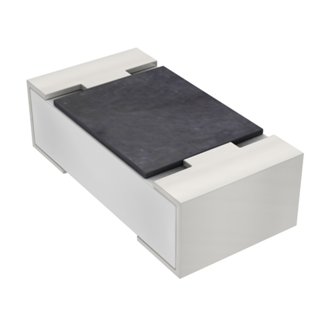
0402 Resistor
2025-05-06
Understanding A 0603 Resistor
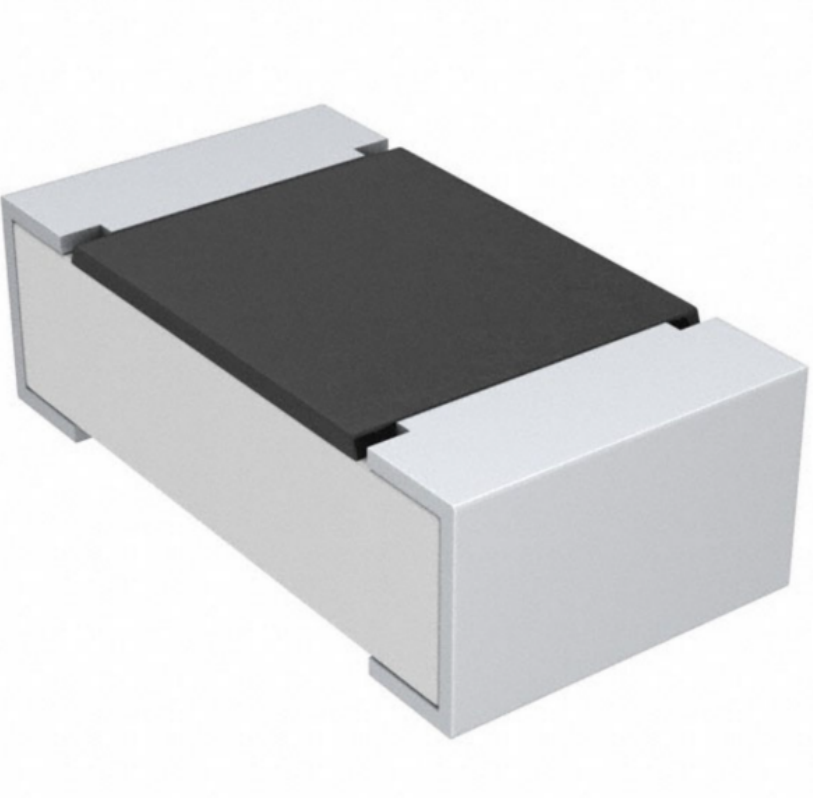
0603 resistor,dimensions,marking code, values
2025-05-29
What is 10k Ohm Resistor?

10k resistor 10k resistor color code
2025-05-14
Everything You Need To Know About ARE1309 Relay

2025-04-23
What Is A 1206 Resistor?
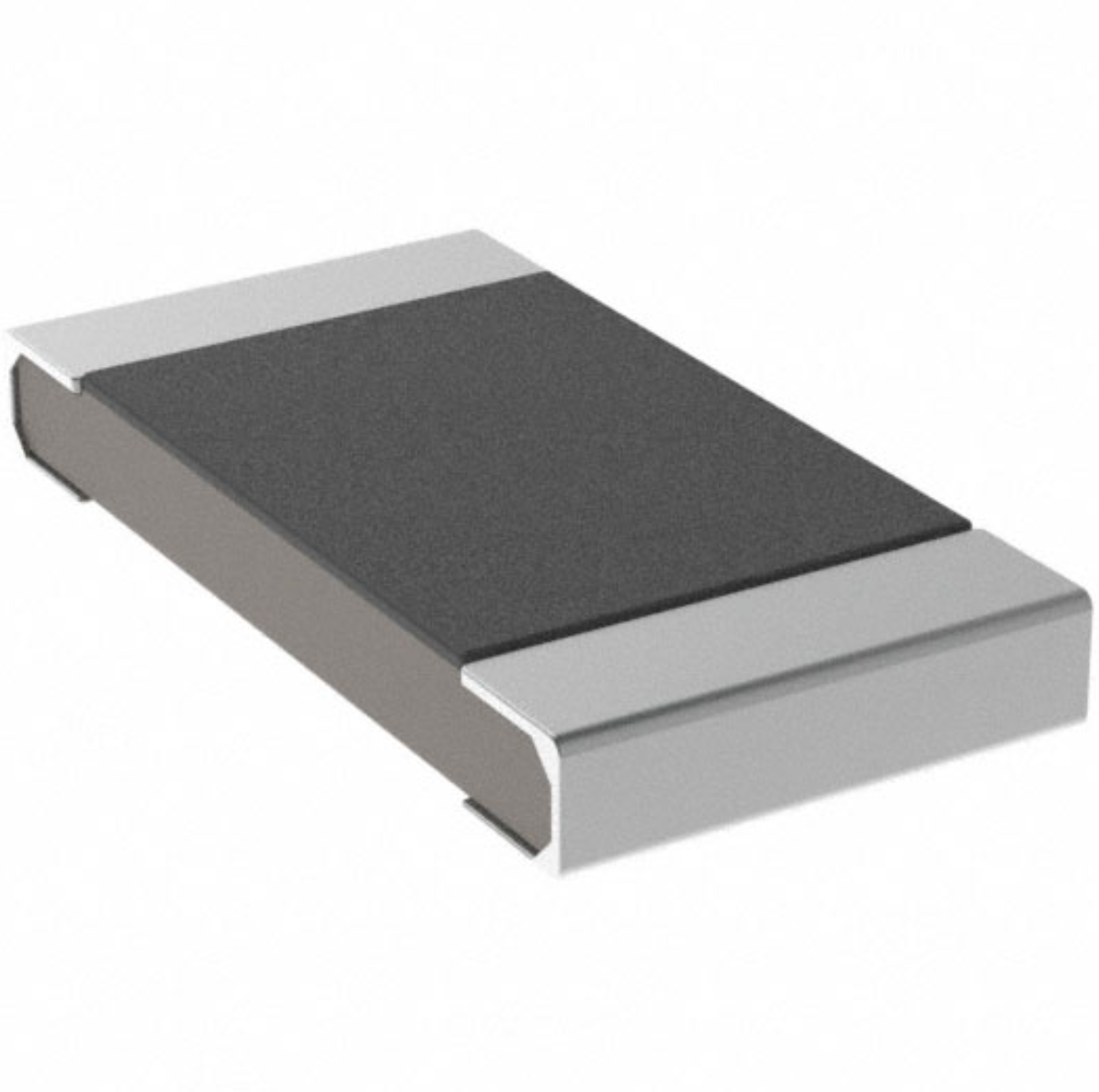
1206 resistor dimensions,footprint,value
2025-06-05
120 Ohm Resistor- Specifications, Applications, and Features
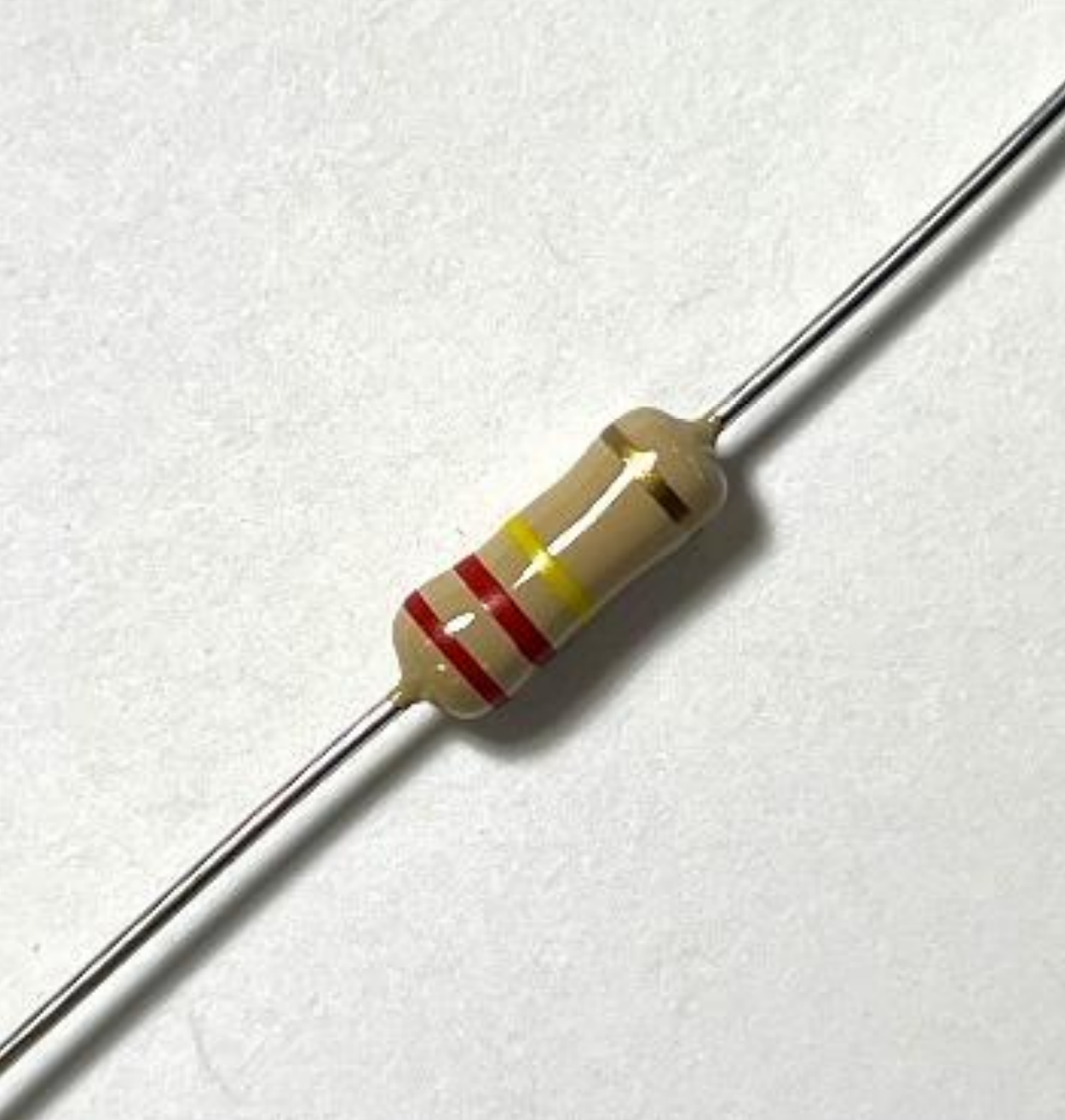
2025-05-12
What Is The 1K Ohm Resistor?

1k ohm resistor and color code
2025-05-21
What is 100 Ohm Resistor And Color Code?
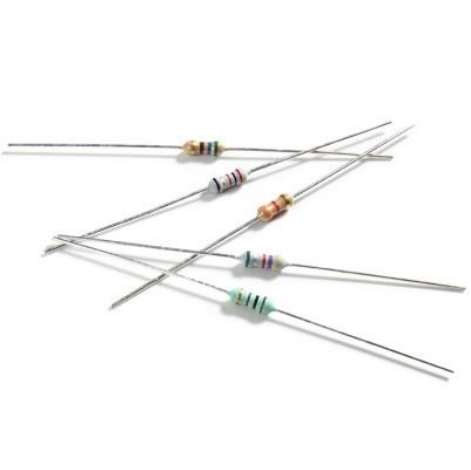
100 ohm resistor color code
2025-05-17
What Is The 0805 Resistor?
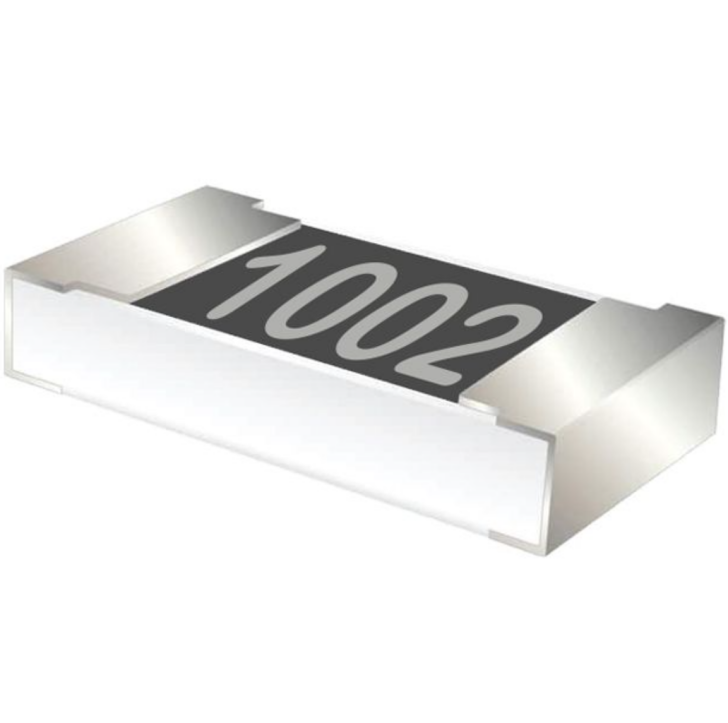
0805 Resistor, dimensions, value, tolerance, footprint
2025-05-31
What Is A 0201 Resistor?
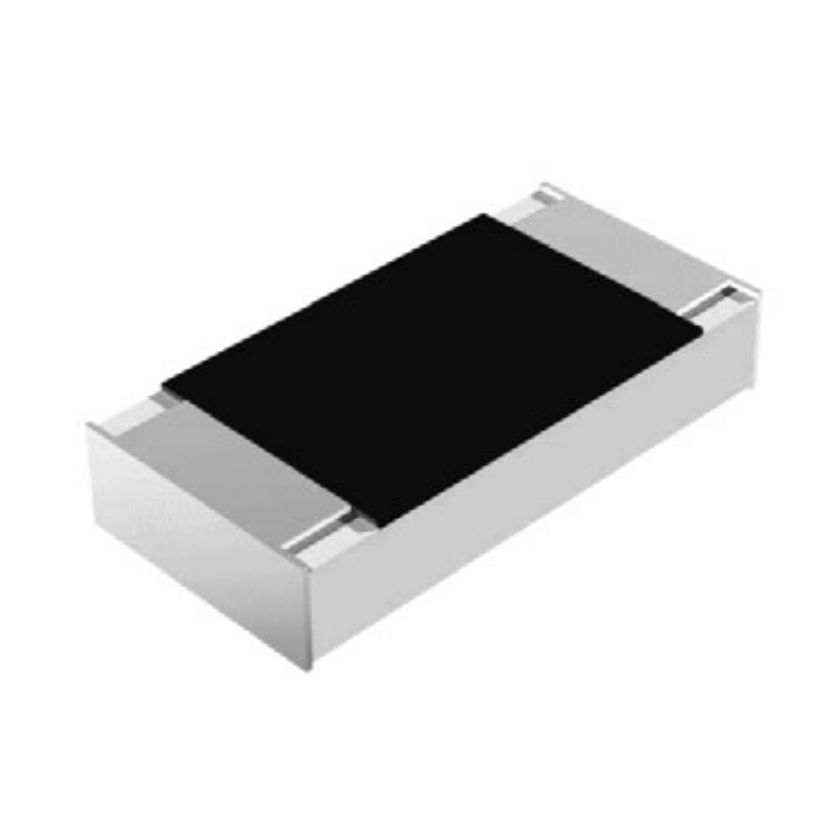
0201 Resistor dimensions, footprint,values
2025-05-24











 Product Catalog
Product Catalog





